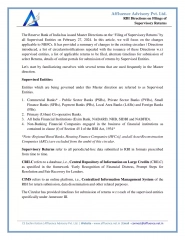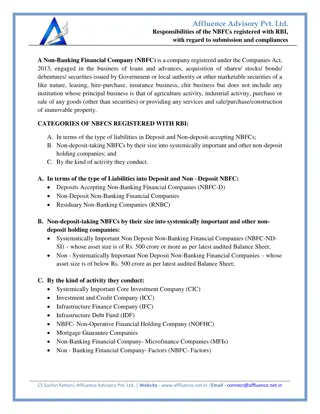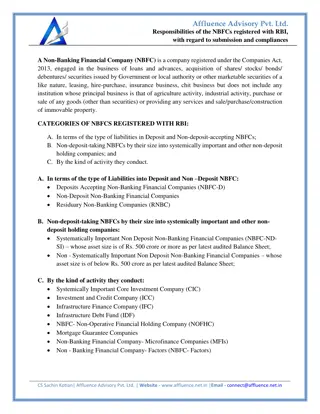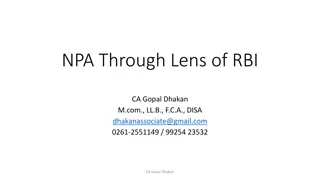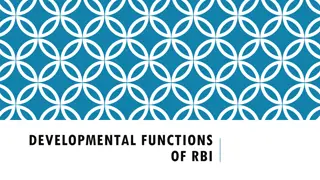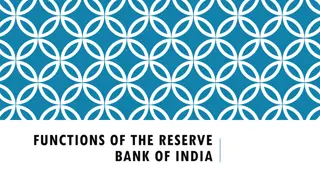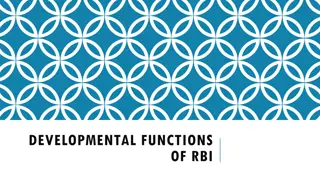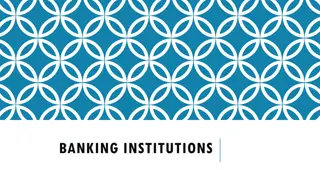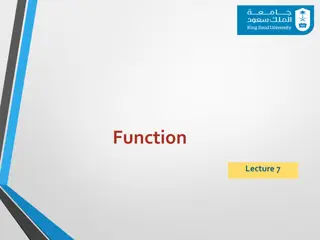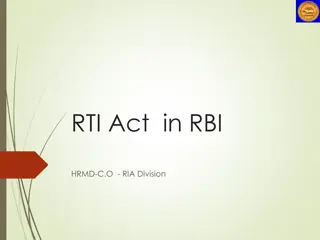
All About RBI Functions and Roles
Discover the roles and functions of the Reserve Bank of India (RBI): from being the issuer of banknotes to serving as the central bank of India. Learn about its history, key responsibilities, and more.
Download Presentation

Please find below an Image/Link to download the presentation.
The content on the website is provided AS IS for your information and personal use only. It may not be sold, licensed, or shared on other websites without obtaining consent from the author. If you encounter any issues during the download, it is possible that the publisher has removed the file from their server.
You are allowed to download the files provided on this website for personal or commercial use, subject to the condition that they are used lawfully. All files are the property of their respective owners.
The content on the website is provided AS IS for your information and personal use only. It may not be sold, licensed, or shared on other websites without obtaining consent from the author.
E N D
Presentation Transcript
StudyMafia.Org Function Of RIB Submitted Studymafia.org Studymafia.org Submitted To: To: Submitted Submitted By: By: Studymafia.org Studymafia.org
Table Contents Definition Introduction Facts About RBI Functions of RBI Conclusion 2
Definition The central bank of India, RBI is also regarded as a bank of banks owing to the functions of RBI. It was established on April 1, 1935, under the Reserve Bank of India Act, 1934. 3
Introduction In the beginning, the headquarters of RBI was established in Calcutta. However, soon after, in 1937, it was permanently shifted to Mumbai. As of October 2021, the Governor of the Reserve Bank of India is Mr Shaktikanta Das. He is the 25th RBI Governor and all the RBI functions are supervised by him. 4
Facts About RBI The first Governor of RBI was Osborne Smith, The first Indian governor of RBI was C D Deshmukh. Originally, the Reserve Bank of India was privately owned; and was established as a private bank with two extra functions: the regulation and control of all banks in India, and to be the banker to the then government. 6
Facts About RBI Since its nationalization in 1949, RBI has been wholly owned by the Government of India and thus, some new roles were added to the list of functions of RBI! 7
Functions of RBI The Issuer of Bank Notes The most important function of RBI is the issuance of currency notes and coins, except the one rupee note and coin which are issued by the Ministry of Finance. All other notes bear the signature of the RBI Governor. However, the agency of distribution of all notes and coins issued by the Government of India is the Reserve Bank of India. 8
Functions of RBI Banker to the Government Another chief function of RBI is that it takes care of the banking needs of the government, which includes maintaining & operating the deposit accounts of the government, collecting the receipts of funds, and making payments on behalf of the Government of India. 9
Functions of RBI Custodian of Cash Reserves of Commercial Banks Commercial banks are required to maintain the cash reserves at a rate decided by the RBI in its monetary policy. Custodian of Foreign Exchange Reserve Another of the important functions of RBI is maintaining a reserve of foreign currencies that enables the RBI to deal with any crisis situation. 10
Functions of RBI Lender of the Last Resort Often regarded as the banker of banks, the RBI acts as a parent to all commercial banks in India. Thus, it becomes the lender of the last resort for all banks when they are in a crisis situation. RBI helps them by lending money, although at higher RoI, to sail through the tide of financial difficulties. 11
Functions of RBI Debt Manager for Government The government of India stores their money in the RBI. They keep these deposits of government free of interest. Besides, it all makes and receives the payment and help floating the new loans. 12
Functions of RBI Accounts Settlement and Central Clearance All the commercial banks in India, stores their surplus cash in the Reserve Bank of India. Thus, it becomes easier for them to deal with each other and settle any claims that are entered in the books. This has also made the clearing account a very important function for the RBI. 13
Functions of RBI Government Securities Besides other government deposits, RBI also manages government securities. They administer the investment for the institutions that invest a portion of their total liabilities or assets in the government securities. 14
Functions of RBI Controller of Credit RBI controls the credit created by the commercial banks in India, in accordance with the economic priorities of the government of India. RBI uses quantitative and qualitative methods to control and regulate the flow of money in the market. 15
Conclusion All the central activities about the money in India is controlled by the RBI. They are responsible for the changing exchange rates as well as the interest rates. But there are many other functions as well which RBI performs. The functioning of RBI is fully done the central board of directors. 16

